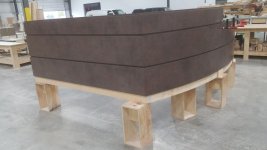Crazyraceguy
Member
- Joined
- Oct 16, 2015
- Messages
- 5,067
This stuff is completely unknown to me, but I understand it is quite common in Europe.
My questions are about mixing (thickness) and drying time. I am looking for a thicker glue for a specific application, but I don't want it to dry faster too. The thick version of Titebond is a quicker drying formula.
If I would mix the Cascamite thicker, does it dry faster? How long does it take to harden? Is there another alternative that I am unaware of?
My questions are about mixing (thickness) and drying time. I am looking for a thicker glue for a specific application, but I don't want it to dry faster too. The thick version of Titebond is a quicker drying formula.
If I would mix the Cascamite thicker, does it dry faster? How long does it take to harden? Is there another alternative that I am unaware of?


